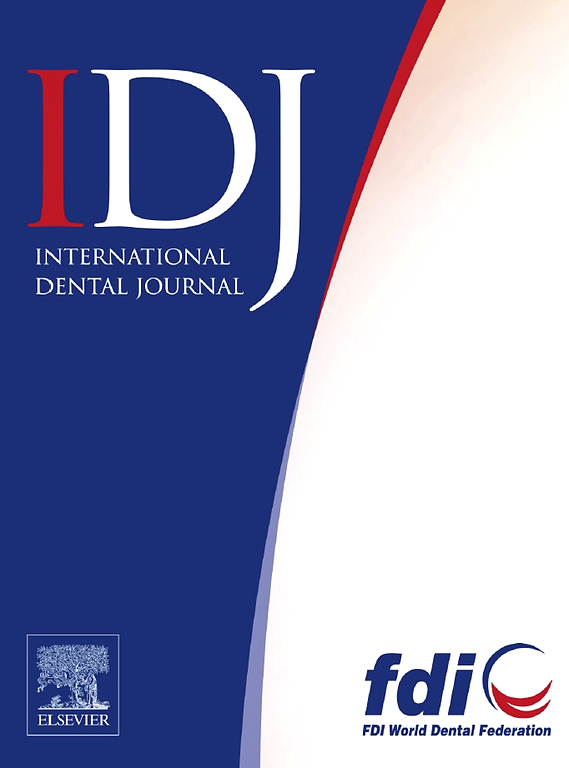P. Gingivalis LPS Drives Osteoclastogenesis and Impairs Osteoblast Differentiation by Suppressing Sema3A/Nrp1 Via TLR-4
IF 3.7
3区 医学
Q1 DENTISTRY, ORAL SURGERY & MEDICINE
引用次数: 0
Abstract
Objectives
This study demonstrates that the Sema3A/Nrp1 pathway confers protection against Porphyromonas gingivalis LPS (P-LPS)-induced osteolysis and identifies key molecular mechanisms involved.
Methods
The effect of P-LPS on Sema3A/Nrp1 expression assessed in the preosteoclast cell line (RAW267.4) and primary mouse bone marrow stromal cells (BMSCs) using Real-time-PCR, western blot and ELISA. The effect of recombinant Sema3A on RAW267.4 cell and BMSC proliferation under P-LPS treatment was determined by CCK8 assay. Osteoclastic and osteoblastic markers gene was analysed by Real-time-PCR. ALP activity and mineralization were tested in BMSCs for osteoblast differentiation. TRAP staining and activity were measured for osteoclast differentiation. Micro-CT was applied to analysed P-LPS-induced calvarial osteolytic model.
Results
P-LPS induced significantly downregulated Sema3A/Nrp1 expression in both the preosteoclast cell line (RAW267.4) and primary mouse bone marrow stromal cells (BMSCs). Moreover, P-LPS exposure elevated osteoclastic gene expression, increased TRAP activity and promoted RANKL-induced osteoclast differentiation. However, these effects of promotion were attenuated by Sema3A administration. In addition, P-LPS impaired osteoblast differentiation in BMSCs, as evidenced by depressed osteogenic markers, attenuated β-catenin transcriptional activity, and diminished mineralization, all of which were rescued by Sema3A supplementation. Intriguingly, Sema3A alleviated P-LPS-induced repression of proliferation in BMSCs but did not affect the proliferation of RAW267.4 cells. Furthermore, P-LPS downregulated the expression of Sema3A/Nrp1 via Toll-like receptor 4 (TLR-4). Additionally, an in vivo study revealed that Sema3A administration markedly ameliorated P-LPS-mediated inflammatory osteolysis.
Conclusion
Our data identify the Sema3A-Nrp1 axis as a P-LPS–sensitive regulator of bone homeostasis, offering therapeutic potential to reverse infection-induced osteolysis through dual modulation of osteoclast and osteoblast activities. Sema3A attenuated PLPS- driven bone loss via concurrent osteoclast inhibition and osteoblast stimulation
Clinical Relevance
Our work identifies the above dual-targeting mechanism as a foundation for novel therapies against infection-related oral osteolysis.
P. Gingivalis LPS通过TLR-4抑制Sema3A/Nrp1促进破骨细胞生成并损害成骨细胞分化
目的:本研究表明,Sema3A/Nrp1通路对牙龈卟啉单胞菌LPS (P-LPS)诱导的骨溶解具有保护作用,并确定了其中的关键分子机制。方法:采用Real-time-PCR、western blot和ELISA检测P-LPS对破骨前细胞系(RAW267.4)和原代小鼠骨髓基质细胞(BMSCs)中Sema3A/Nrp1表达的影响。CCK8法检测重组Sema3A对P-LPS处理下RAW267.4细胞及BMSC增殖的影响。采用Real-time-PCR分析破骨细胞和成骨细胞标记基因。测定骨髓间充质干细胞成骨分化的ALP活性和矿化程度。测定破骨细胞分化的TRAP染色和活性。应用显微ct对p - lps诱导的颅骨溶骨模型进行分析。结果:P-LPS诱导破骨前细胞系(RAW267.4)和原代小鼠骨髓基质细胞(BMSCs)中Sema3A/Nrp1的表达均显著下调。此外,P-LPS暴露可提高破骨细胞基因表达,增加TRAP活性,促进rankl诱导的破骨细胞分化。然而,这些促进作用在给药Sema3A后减弱。此外,P-LPS还会损害骨髓间充质干细胞的成骨细胞分化,表现为成骨标志物的抑制、β-catenin转录活性的减弱和矿化程度的降低,这些都可以通过补充Sema3A来恢复。有趣的是,Sema3A减轻了p - lps诱导的骨髓间充质干细胞增殖抑制,但不影响RAW267.4细胞的增殖。此外,P-LPS通过toll样受体4 (TLR-4)下调Sema3A/Nrp1的表达。此外,一项体内研究显示,Sema3A可显著改善p - lps介导的炎症性骨溶解。结论:我们的数据表明Sema3A-Nrp1轴是p - lps敏感的骨稳态调节剂,通过双重调节破骨细胞和成骨细胞的活性,具有逆转感染诱导的骨溶解的治疗潜力。临床意义:我们的工作确定了上述双重靶向机制,为治疗感染相关口腔溶骨症的新疗法奠定了基础。
本文章由计算机程序翻译,如有差异,请以英文原文为准。
求助全文
约1分钟内获得全文
求助全文
来源期刊

International dental journal
医学-牙科与口腔外科
CiteScore
4.80
自引率
6.10%
发文量
159
审稿时长
63 days
期刊介绍:
The International Dental Journal features peer-reviewed, scientific articles relevant to international oral health issues, as well as practical, informative articles aimed at clinicians.
 求助内容:
求助内容: 应助结果提醒方式:
应助结果提醒方式:


